Cleveland Motion Controls MAN-70254 User manual
- Type
- User manual

7550 Hub Parkway Cleveland, Ohio 44125 Phone: 216.524.8800 Fax: 216.642.2131 www.CMCcontrols.com
INSTRUCTION MANUAL
(MAN-70254)
CLEVELAND-KIDDER ®
ULTRA SERIES UNDER PILLOW BLOCK
TRANSDUCER
MODELS: UPB1 & UPB2
AA
REVISION
Industrial Products Division

ULTRA SERIES UNDER PILLOW BLOCK TRANSDUCER MAN-70254 REV. AA
PAGE 2 OF 18
REVISION HISTORY
Rev ECO Author Date Description of Change
AA XXX RDL 01/31/2005 As Released

MAN-70254REV. AA ULTRA SERIES UNDER PILLOW BLOCK TRANSDUCER
PAGE 3 OF 18
TABLE OF CONTENTS
1 IMPORTANT INFORMATION .........................................................................5
1.1 ORDER NUMBERS ...........................................................................................................5
1.2 CONTACT INFORMATION AND SERVICE ASSISTANCE..........................................................5
1.3 RECEIVING AND UNPACKING ............................................................................................6
1.4 PRE-INSTALLATION PRECAUTIONS....................................................................................6
1.4.1 Shipping..................................................................................................................6
1.4.2 Roll Balance............................................................................................................6
1.4.3 Critical Roll Speed...................................................................................................7
1.4.4 Avoiding Damage to the Roll...................................................................................7
1.4.5 Excitation Voltage ...................................................................................................7
2 SPECIFICATIONS.......................................................................................8
2.1 FORCE RATINGS .............................................................................................................9
2.2 BEFORE INSTALLING THE TRANSDUCER............................................................................9
2.2.1 Installation Precautions...........................................................................................9
2.2.2 Safety Considerations.............................................................................................9
2.2.3 Mounting Configurations.......................................................................................10
2.2.4 Mounting Hardware and Fastener Torque Recommendations .............................. 11
2.2.5 Mounting Dimensions............................................................................................12
3 INSTALLING THE UNDER PILLOW BLOCK TRANSDUCER ..............................13
3.1 ORIENTING THE UNDER PILLOW BLOCK TRANSDUCER.....................................................13
3.2 MOUNTING SURFACE PREPARATION...............................................................................13
3.3 MOUNTING THE TRANSDUCER TO THE MACHINE FRAME...................................................13
3.4 MOUNTING THE PILLOW BLOCK BEARING TO THE LOAD CELL...........................................14
3.5 EXTREMELY SEVERE APPLICATIONS...............................................................................14
3.6 SHAFT EXPANSION........................................................................................................15
3.7 MOUNTING THE SENSING ROLL ...................................................................................... 15
3.8 CHECKING THE TRANSDUCER MOUNTING.......................................................................15
3.9 ELECTRICAL CONNECTIONS AND WIRING........................................................................15
3.10 MATING CONNECTORS ...............................................................................................16
3.11 CALIBRATION.............................................................................................................16
4 TROUBLE SHOOTING...............................................................................17
4.1 DC RESISTANCE CHECK................................................................................................18
4.2 DC VOLTAGE AND CURRENT CHECKS ............................................................................18

ULTRA SERIES UNDER PILLOW BLOCK TRANSDUCER MAN-70254 REV. AA
PAGE 4 OF 18
WARRANTY
Cleveland Motion Controls warrants the goods against defects in design, materials and workmanship for the period
of 12 months from the date of delivery on the terms detailed in the Cleveland Motion Controls, Inc. Terms and
Conditions of Sale, document number AO-90131
Cleveland Motion Controls, Inc. reserves the right to change the content and product specification without notice.
© 2005 in this document is reserved to:
Cleveland Motion Controls, Inc.
7550 Hub Parkway
Cleveland, OH 44125
216-524-8800 Phone
216-642-2199 Fax
INTENDED USERS
This Instruction Manual is to be made available to all persons who are required to configure, install or service the
equipment described in this manual or any other related activity.
ADDITIONAL INFORMATION
ATTENTION: The following information is provided merely as a guide for proper installation. Cleveland Motion
Controls cannot assume responsibility for the compliance (or failure to comply) to any code (national, local or other)
that prescribes the proper installation of this electro-mechanical device or associated equipment. A hazard of
personal injury and/or property damage can exist if applicable codes are not adhered to.
CE EMC RESPONSIBILITY
The Cleveland-Kidder Ultra Transducer may be used by a manufacturer as a component of a larger system, along
with other components, which may or may not bear the CE mark. The system assembler is responsible for the
compliance of the system as a whole with the EMC Directive.
Before installing the Transducer you must clearly understand who is legally responsible for conformance with the
EMC Directive. Misappropriation of the CE mark is a criminal offense.

MAN-70254REV. AA ULTRA SERIES UNDER PILLOW BLOCK TRANSDUCER
PAGE 5 OF 18
1 IMPORTANT INFORMATION
1.1 ORDER NUMBERS
Use the following example and Tables A to determine order numbers for:
• Ultra Series Under Pillow Block Transducers
• With or without mounting Plate
Figure 1 – Example for Determining Transducer Order Numbers
If you needed to Purchase a Transducer corresponding to
following description: Then, you would use Catalog Numbers:
• Size 1 Under Pillow Block Transducer.
• With Blank mounting plate.
• Maximum Working Force (MWF) of 100 lbs.
Ultra Series Transducer = M846-13523-100 (Refer to
Table A)
Having the following information at hand will help you to easily determine which of the Ultra Series Under Pillow
Block Transducers is right for your application:
• The size of the pillow block bearing used
• Pillow block mounting plate requirements
• Maximum working force
Use Table A to determine the catalog number for the proper Under Pillow Block Transducer.
Table A – Determining a Catalog Number for the Ultra Under Pillow Block Transducer with Stainless Steel mounting plate.
Order Code Suffix, M.W.F.
Size Base Part Number -000 -100 -200 -300 -400 -500
UPB1 M846-13523 25 lb. 50 lb. 100 lb. 250 lb. 500 lb. 1000 lb.
UPB2 M846-13510 1000 lb. 2500 lb. 5000 lb. 10000 lb. 20000 lb.
For units without the blank Stainless Steel mounting plate, change the last digit of the ending suffix from a zero “0”
to a “1”. Example: use M846-13523-001 instead of M846-13523-000
1.2 CONTACT INFORMATION AND SERVICE ASSISTANCE
For service assistance, have the following information available:
• Type of Transducer you are using
• Maximum working force
• Purchase order number
You can contact Cleveland Motion Controls at:
Phone: 216.524.8800
Fax: 216.642.5155
For the latest product information, technical literature etc., visit our website at www.cmccontrols.com

ULTRA SERIES UNDER PILLOW BLOCK TRANSDUCER MAN-70254 REV. AA
PAGE 6 OF 18
Disassembly by improperly trained personnel may result in additional damage to these units. Should repairs
be required or for warranty repairs, contact the Customer Service Department for a return authorization
number before returning the units.
1.3 RECEIVING AND UNPACKING
After receiving the Ultra Under Pillow Block Transducer you should:
• Carefully, unpack and inspect the equipment
• Compare the received shipment with the packing list
• Report any damage to the carrier and your CMC representative
• Store equipment that will not be used in a clean, dry location
• Take appropriate precautions to prevent moisture, dust and dirt from accumulating in storage and
installation areas
1.4 PRE-INSTALLATION PRECAUTIONS
1.4.1 SHIPPING
Shock and the vibration transmitted to the transducers by the sensing roll during transportation can damage the
transducers. It is essential that you remove the sensing roll when the machine is shipped with the transducers
mounted.
1.4.2 ROLL BALANCE
The sensing roll should be adequately balanced. Understand that the balance of the sensing roll will be more
demanding than that typically needed in general rotating machinery. The goal goes beyond just limiting the force to
which bearings will be subjected, but rather to minimize the generation of an unintended noise component in the
transducer tension signal. The centrifugal force caused by imbalance can be estimated using the following formula:
F = (1.77 x 10-6 ) x W x R x (RPM)2
Where:
F = centrifugal force (in units of lb-f)
W = weight imbalance (in units of ounces)
R = radius of displacement, distance of imbalance weight from roll axis of rotation (in inches)
RPM = Revolution per minute
The force increase is equal to the square of the RPM, or in other words, doubling the RPM causes four times the
imbalance force. Because rolls tend to have a high length-to-diameter ratio, two-plane (dynamic) balancing is
recommended. Balancing is particularly needed where higher RPMs and lower web forces are involved.
To illustrate how much imbalance induced “noise” could be generated, the following table shows the force
disturbance for various ISO balance grades for an illustrative case of a 20 pound roll (4” diameter x 36” long,
aluminum ) rotating at 1500 RPM.
Balance Grade
(ISO 1940/1) Residual Imbalance Resultant Force due to
Residual Imbalance
G16 1.25 oz-in +/- 5 lb-f at 25 Hz
G6.3 0.5 oz-in +/- 2 lb-f at 25 Hz
G2.5 0.2 oz-in +/- 0.8 lb-f at 25 Hz
G1 0.08 oz-in +/- 0.3 lb-f at 25 Hz

MAN-70254REV. AA ULTRA SERIES UNDER PILLOW BLOCK TRANSDUCER
PAGE 7 OF 18
1.4.3 CRITICAL ROLL SPEED
Even with a balanced roll, a vibration can be set up in a stationary shaft. If this vibration (in cycles per minute)
occurs at the harmonic frequency of the shaft, the transducers can be damaged. To determine critical roll speed, use
the following formula:
Critical roll speed in RPM = 4.8 x 106 x Shaft O.D.
(Shaft Length)2
(Dimensions are in inches)
To assure that this issue is avoided, the critical roll speed should be at least 20% above the roll speed attained at
maximum web speed.
1.4.4 AVOIDING DAMAGE TO THE ROLL
To avoid damaging the transducer, refrain from repetitive overloading above the maximum working force or severe
overloading.
1.4.5 EXCITATION VOLTAGE
Maximum Excitation Voltage for the Ultra Series Under Pillow Block transducers must be limited to 5.6 VDC or 5.6
VRMS. Do not use 10 Volt excitation or possible damage to the semiconductor strain gage elements can occur.
Before applying power to the amplifier, verify that the amplifier excitation voltage has been set to 5.0 VDC.

ULTRA SERIES UNDER PILLOW BLOCK TRANSDUCER MAN-70254 REV. AA
PAGE 8 OF 18
2 SPECIFICATIONS
Item: Specification:
Transducer Weight UPB1 UPB2
1.5 lbs.
0.68 kg. 12 lb.
5.4 kg
Mounting Plate with screws UPB1 UPB2
2.2 lbs.
1 kg. 10 lb.
5 kg
Material
Strain Sensing beam – UPB1: 6061Aluminum
UPB2: 410 Stainless steel
Mounting Plate – 304 Stainless steel
Finish Material UPB1 only: Anodized Aluminum
Mounting Surface Flatness 0.002 inches from one side of transducer to the other.
Bridge Resistance Steel Transducer: 135-147 Ohms @ 20 o C
Aluminum Transducer: 122-134 Ohms @ 20 o
Gage Type Semi-conductor strain gage, gage factor equals 95 (nominal)
Connector Type M12 Quick-disconnect, 4 conductor, DC keyed
Excitation Voltage 5.6 VDC or VAC (RMS) maximum
(Excess voltage can cause permanent damage)
Nominal Output Signal at Rated
MWF +/- 120 mV per Transducer (with 5.0 VDC or VAC rms excitation
voltage)
Output Impedance Steel Transducer: Approximately 64 Ohms per Bridge leg
Aluminum Transducer: Approximately 60 Ohms per Bridge leg
Ultimate Overload 500% MWF (typ) for units rated 10,000 M.W.F or less
250% MWF (typ) for units rated at 20,000 M.W.F or more
Maximum Voltage, Gage to
Beam or Base (Ground) 50 Volts peak
Operating Temperature Range 0o F to +200 o F

MAN-70254REV. AA ULTRA SERIES UNDER PILLOW BLOCK TRANSDUCER
PAGE 9 OF 18
2.1 FORCE RATINGS
Refer to Table A in this document for Transducer Maximum Working Force Ratings.
2.2 BEFORE INSTALLING THE TRANSDUCER
Before installing the Transducer, perform the following steps:
1. Review the Installation Precautions (Section 2.2.1 on page 9).
2. Review the Safety Considerations (Section 2.2.2 on page 9)
3. Review the Mounting Configurations (Section 2.2.3 on page 10)
4. Assemble the Mounting Hardware and review the Fastener and Torque information (Section 2.2.4 on page 11).
5. Reference the Mounting Dimensions (Section 2.2.5 on page 12).
2.2.1 INSTALLATION PRECAUTIONS
To ensure proper installation and operation of the system, keep the following points in mind:
• Exercise care to avoid overstressing the transducer when handling partially mounted rolls. Even
relatively short rolls can afford an impressive mechanical advantage over the transducer.
• Bolting the transducer to a non-flat surface can cause deformation of the transducer body and degrade
the quality of the tension signal.
Failure to follow precautions can result in serious damage to the Ultra Series Transducer and possibly
void the warranty!
2.2.2 SAFETY CONSIDERATIONS
Safety practices should not be an afterthought. Before installing, servicing or calibrating review and follow
applicable policies and procedures to ensure worker safety. Machinery must be in a safe state and be aware of
any additional hazards that can arise when installing and calibrating higher force transducers.
The following points are also important to remember:
• Check that all hardware is mounted with appropriate fasteners (thread size and pitch, fastener grade,
length of thread engagement).
• When “dead-weights” are used to produce calibration forces, always wear steel-toed shoes.
• When manually handling calibration weights and rolls, use safe lifting practices to avoid injury.
• Size cordage or straps with ample safety factors to reduce the chances of failure and falling weights.
• Consider where the cords and weights will travel to should a failure occur.

ULTRA SERIES UNDER PILLOW BLOCK TRANSDUCER MAN-70254 REV. AA
PAGE 10 OF 18
2.2.3 MOUNTING CONFIGURATIONS
Ultra Series Under Pillow Block Transducers are designed for use with shafts that are mounted in Pillow Block
Bearings. See Figure 1. When choosing a mounting configuration, evaluate your options by taking the following
points into consideration:
• Model type
• Safety
• Machine Frame orientation
• Ease of Assembly
Figure 1 –Mounting Configuration
The tension-sensing roll must not be mounted where the web wrap angle can vary, or the transducer will not
interpret the tension properly. If a variance in the wrap angle occurs, it is sensed by the transducer as a tension
change and the change is indicated on the tension indicator. In cases where it is impossible to mount the transducer
where the wrap angle does not vary, the change in indicated tension that results should be calculated and if small,
can be disregarded.
Figure 2 - Example of Varying Wrap Angles
WRAP VARIESWRAP VARIES
PROCESS
OK FOR TENSION SENSING
Pillow Block Bearing
Washdown UPB Transducer

MAN-70254REV. AA ULTRA SERIES UNDER PILLOW BLOCK TRANSDUCER
PAGE 11 OF 18
2.2.4 MOUNTING HARDWARE AND FASTENER TORQUE RECOMMENDATIONS
The Table B provides you with guidelines to refer to when determining torque values for clean and dry fasteners.
Keep in mind, however, that several variables can influence the “optimum” torque to be used in a given situation,
and Table B should be used only as a general reference. If you are unsure of the proper torque values to use, consult
the machine manufacturer for specific recommendations.
• Use quality alloy steel fasteners (SAE Grade 8, ISO property grade 10.9).
• If the fastener threads are lubricated, reduce the torque amount. Use a torque value that is 70 percent
of that listed in Table B. For example, if you are using a lubricated 1/2-13NC base stud on a UPB2
transducer, reduce the torque amount of 45 ft-lb to 31 ft-lb.
• It is recommended that an assembly lubricant be used with Stainless Steel fasteners to prevent galling
and the fastener from seizing in the threads.
• Transducers operated at lower forces may not require the higher clamping forces obtained at the cited
torque values.
Table B – Torque Value Guideline Tables
Transducer Models: Fastener Type: Fastener Thread
(SAE): Torque:
Base Bolt 5/16-18 NC 12 lb-ft
UPB1 Mounting Plate Bolt 5/16-18 NC 12 lb-ft
Base Bolt 1/2-13 NC 45 lb-ft
UPB2 Mounting Plate Bolt 1/2-13 NC 45 lb-ft
Transducer Models: Fastener Type: Fastener Thread
(Metric): Torque:
Base Bolt M8-1.25 8 N-m
UPB1 Mounting Plate Bolt M8-1.25 8 N-m
Base Bolt M12-1.75 35 N-m
UPB2 Mounting Plate Bolt M12-1.75 35 N-m
Mechanisms used for industrial automation can tax even the best threaded fasteners. You can improve
the likelihood that bolts and shafts remain secure by using suitable anaerobic “thread lockers” during
the final assembly.

ULTRA SERIES UNDER PILLOW BLOCK TRANSDUCER MAN-70254 REV. AA
PAGE 12 OF 18
F G
J
E
H
D
W
LOAD CELL
PILLOW BLOCK
MOUNTING PLATE
A
BM N
K
C
L
2.2.5 MOUNTING DIMENSIONS
Figure 3 – Mounting Dimensions
Mounting dimensions in Inches: Mounting dimensions in Millimeters:
Designator: UPB1 UPB2
A 1.5 3
B 0.55 0.80
C 5.8 10.0
D 1.5 3.0
E 5/16 (4) 1/2 (4)
F 5.8 (Max.) 10.0 (Max.)
G 1.6 3.0
H 1.95 2.5
I - -
J 1/2 (Max.) (2) 3/4 (Max.) (4)
K 1.40 1.71
L 6.5 11.0
M 1.3 3.3
N 2.2 3.95
O - -
P - -
Q - -
R - -
S - -
T - -
U - -
V - -
W 2.2 4.0
X - -
Y - -
Z - -
Designator: UPB1 UPB2
A 38 76
B 14 20
C 147.5 254
D 38 76
E M8 (4) M12 (4)
F 147 (Max.) 254 (Max.)
G 40.5 76
H 49.5 63.5
I - -
J M12 (Max.) (2) M20 (Max.) (4)
K 35.5 43.5
L 165 279.5
M 33 84
N 56 100
O - -
P - -
Q - -
R - -
S - -
T - -
U - -
V - -
W 56 101.5
X - -
Y - -
Z - -

MAN-70254REV. AA ULTRA SERIES UNDER PILLOW BLOCK TRANSDUCER
PAGE 13 OF 18
CORRECT
CORRECT
INCORRECT
INCORRECT
WEB FORCE
LOAD ZONE DIRECTION LABEL
3 INSTALLING THE UNDER PILLOW BLOCK TRANSDUCER
The following sections provide you with detailed information and steps to correctly install the Ultra Series Under
Pillow Block Transducer.
3.1 ORIENTING THE UNDER PILLOW BLOCK TRANSDUCER
The Under Pillow Block transducer must be oriented so that the resultant tension force direction (bisector of the
wrap angle) is in the same quadrant as the load direction arrow on the side of the UPB. See Figure 4.
Ensure that the mounting location takes the transducer orientation into consideration.
Figure 4 –Transducer load direction Diagram.
The orientation is very important to ensure that the Transducer works as it was intended to. Incorrect
orientation will result in very little or no signal being produced from the transducer.
3.2 MOUNTING SURFACE PREPARATION
Remove any loose paint, rust or scale from the machine frame before mounting. The mounting surfaces for the
transducer should be flat to within 0.002 inches from one end of the transducer to the other. This generally requires a
machined surface upon which to mount the transducer.
3.3 MOUNTING THE TRANSDUCER TO THE MACHINE FRAME
Remove the pillow block mounting plate (it is held in place by four stainless steel corner bolts) in order to gain
access to the four load cell mounting holes (Refer to Figure 5). For the mounting hole spacing pattern and proper
bolt size refer to Figure 3 in section 2.2.5. Drill and tap the machine frame to match the load cell mounting holes.
The UPB load cell is designed so that either imperial or metric mounting bolts can be used when mounting the load
cell to the machine frame (Refer to section 2.2.5). Orient the UPB load cell properly to obtain a good tension
measurement (See Figure 4 for details) and bolt the load cell in place. For proper fastener torque specifications Refer
to Section 2.2.4
The mounting surface must be flat to within 0.002 inches from one end of transducer to the other or the
transducer will produce an error signal due to the sensing beams flexing.
When tightening the mounting bolts use a criss-cross pattern and don’t fully tighten all the bolts until
each bolt has been lightly tightened down first.

ULTRA SERIES UNDER PILLOW BLOCK TRANSDUCER MAN-70254 REV. AA
PAGE 14 OF 18
Figure 5 – Mounting the Under Pillow Block Transducer
3.4 MOUNTING THE PILLOW BLOCK BEARING TO THE LOAD CELL
Note: The UPB is normally shipped with a pillow block mounting plate but is occasionally ordered without one if
the customer chooses to make their own.
Mounting the pillow block bearing to the UPB is simple and convenient. The mounting plate is held in place by four
stainless steel corner bolts. If the mounting plate has not already been removed from the transducer then remove the
mounting plate, then drill and tap it to match the pillow block mounting dimensions. A centerline mark is provided
on the mounting plate. The plate is to be drilled and tapped by utilizing this centerline mark to insure that the pillow
block bearing is centered on the plate. Remount the plate and bolt the pillow block bearing to it. The mounting plate
is 304 Stainless Steel, which is amenable to drilling but offers corrosive and chemical resistance. Refer to “J” in the
table in section 2.2.5 above for the maximum bolt diameter recommended for bolting the pillow block bearing to the
mounting plate.
3.5 EXTREMELY SEVERE APPLICATIONS
For applications that can create major build-ups of material (paint, glue…), it is recommended to close the exposed
gaps of the transducer. A good way to do this is to use Electrical Tape all around the side of the UPB Transducer.
Figure 6 – Mounting the Under Pillow Block Transducer

MAN-70254REV. AA ULTRA SERIES UNDER PILLOW BLOCK TRANSDUCER
PAGE 15 OF 18
3.6 SHAFT EXPANSION
If the roller is subjected to higher temperatures after installation, thermal shaft expansion may damage the
transducers. To prevent damage to the transducers, an expansion type pillow block bearing should be used.
3.7 MOUNTING THE SENSING ROLL
The following steps take into consideration the risk and difficulty of handling large rolls and help to minimize the
number of failed attempts at mounting the roll.
1. Before mounting the sensing roll, confirm that the transducer body is securely mounted.
2. The pillow block bearings used must be a expansion type to allow for thermal shaft expansion.
3. Follow the pillow block manufactures directions for installation.
4. The pillow block must be mounted flat to the UPB transducer mounting plate and the transducer must be
mounted flat to the machine surface. Refer to flatness specification in Section 3.2. The pair of transducers must
be parallel to each other in all directions. This should be accomplished by machining the surfaces before
mounting the transducers. Do not insert any shims under the pillow block bearing or the UPB transducer to
accomplish this. Inserting shims will induce twisting moments that create erroneous tension measurements.
3.8 CHECKING THE TRANSDUCER MOUNTING
Before preparing to apply force to the transducer and calibrating the amplifier, inspect the load cell to confirm that it
is oriented and mounted in accordance to the installation instructions. Common problems include:
• Failure to mount transducer on flat (machined) surface.
• Shaft length or roll weight that exceeds allowable limits.
• Fastener torque either excessive or insufficient.
• Transducer mis-oriented so that the axis of sensing is not true to the applied force vector (bisector of
the wrap angle).
• The transducer is positioned in the web path so that the wrap angle is not constant.
3.9 ELECTRICAL CONNECTIONS AND WIRING
Refer to the installation wiring diagrams supplied with the Cleveland-Kidder tension indicator or controller for
making the transducer to amplifier connections. Make certain that:
• The cables do not interfere with the web path, and that they are away from gearing or other moving
parts.
• You exercise care when routing the cables to avoid pick-up from noise-radiating power cabling (motor
armature leads, AC main wiring, etc).
• In environments with severe electromagnetic noise, it may be necessary to route the cables inside
metallic conduit.
• Polarity changes are accommodated by reversing the orientation of the transducer or by interchanging
the black and white output wires.
Figure 7 illustrates a typical full bridge transducer configuration.

ULTRA SERIES UNDER PILLOW BLOCK TRANSDUCER MAN-70254 REV. AA
PAGE 16 OF 18
LEFT XDCR
8
7
6
345
2
1
123
BLK
WHT
BLU
BRN
6
5
48
7
WHT
BLU
BLK
BRN 1
1
2
3
4
2
3
4
RIGHT XDCR
CT
TC
CT
TC
Figure 7 – Full Bridge Transducer Wiring
3.10 MATING CONNECTORS
The M12 connector used on the Ultra Series Under Pillow Block transducer is a four-pin, DC keyed, male connector
that mates directly with the molded corsets offered by Cleveland Motion Controls. The following table lists the pin
numbers and cable colors that apply:
Pin Number Wire Color Signal
1 brown Excitation Voltage
2 white Output - (low going)
3 blue Excitation Return
4 black Output + (high going)
If you choose to make your own
cables or need to repair damaged
connectors, you can purchase a
separate mating connector from
Cleveland Motion Controls. To order,
use CMC part number, X44-34338.
Figure 8 - Front View of M12 Connector
When mating the connector, align the keying mechanism and pins so that they enter the socket without you having
to apply excessive force. Use your fingers to sufficiently tighten the coupling nut enough to ensure an adequate seal
and to discourage accidental loosening.
3.11 CALIBRATION
For the proper calibration procedure, refer to the Instruction Manual that accompanied your amplifier or tension
controller.
2 1
3 4

MAN-70254REV. AA ULTRA SERIES UNDER PILLOW BLOCK TRANSDUCER
PAGE 17 OF 18
4 TROUBLE SHOOTING
Safety should not be an afterthought. Before installing, servicing or calibrating review and follow applicable policies
and procedures to ensure worker safety. Machinery must be in a safe state and be aware of any additional hazards
that can arise when installing and calibrating higher force transducers.
The following table provides you with a list of typical issues that you may encounter and possible solutions:
If you are having this issue: Then:
Low Output Signal
The transducer may have too large a maximum working force (MWF) in relation to the
force to be sensed, or the wrap angle may be insufficient and is not able to generate an
optimum resultant force on the transducer.
Or
The transducer may be improperly orientated such that the transducer’s axis of
sensitivity is not aligned with the bisector of the wrap angle.
Or,
Check the amplifier to confirm that the signals from each transducer will combine
additively. Otherwise, the two signals will work against each other, and only minute
differences between signals appear.
Wrong Polarity of Output Signal Transducer may have been incorrectly oriented. Refer to Section 3.1 for proper load
direction. Alternately, change the signal sense by interchanging the white and black
transducer leads into the amplifier.
No Output Signal
Check to be sure that all connections have been made completely and properly.
Inspect the connecting cables for crimps or cuts.
Verify that the appropriate excitation voltage is being issued by the amplifier with the
load cells connected.
Disconnect the transducer output wires from the amplifier’s input terminals (to eliminate
any potential for accidental loading) and check the output signal using a voltage meter.
Check the transducer (refer to Section 4.1 - DC Resistance Check in this document).
Excessive Output Signal with Minimal or
No Load
The sensing guide roll assembly may be excessively heavy. The sensing guide roll
should not weigh more than ½ the maximum working force of the transducers in most
cases.
Or
The transducer may have too small a maximum working force for the application.
Replace with a higher maximum working force transducer or decrease the web wrap
angle.
Also,
Check cables and connectors for intended connections using an ohm-meter or
continuity checker. Inspect not only for continuity where expected, but also disconnect
pluggable connectors and check for unintended resistances (shorts) between
conductors.
Poor Linearity
Check for mechanical reasons such as rubbing or binding that interferes with the force
being properly transmitted to the load cell.
Or
Your calibration efforts may have been conducted while either the transducer or the
amplifier was in a non-linear mode (i.e. under the effects clipping or saturation). Try and
recalibrate the amplifier using a lower force.
To determine whether the clipping is being caused by the transducer or the amplifier,
apply a series of intermediate forces and record the unamplified tension signal. If the
data demonstrates that the transducer is linear then, investigate the amplifier.

ULTRA SERIES UNDER PILLOW BLOCK TRANSDUCER MAN-70254 REV. AA
PAGE 18 OF 18
4.1 DC RESISTANCE CHECK
If you have attempted to resolve your issue using the table above and have been unsuccessful, use the following
checks to determine the viability of the transducer.
The following nominal DC resistances table indicates a normal load cell, with no load applied at room temperature.
The resistances are cited using both the wire color and the M12 connector pin numbers (Figure ). Often, it is best to
begin by measuring the resistances at the amplifier end of the cable. Then, if a problem is indicated, un-mate the
transducer end of the connector and check the resistances. Following this procedure, allows you to readily and
initially check the resistances without disturbing the transducer or M12 connections and inadvertently disturbing the
interconnect condition.
Measurements taken between the
following wires: Corresponding M12 Connector Pins: Target Resistance
UPB1 Target Resistance
UPB2
WHT - BRN 1-2 88 Ohm 88 Ohm
BLK - BRN 1-4 88 Ohm 88 Ohm
WHT - BLK 2-4 118 Ohm 118 Ohm
WHT - BLU 2-3 104 Ohm (Varies slightly based
on load cell temperature) 112 Ohm (Varies slightly based
on load cell temperature)
WHT - BLU 2-3 104 Ohm (Varies slightly based
on load cell temperature) 112 Ohm (Varies slightly based
on load cell temperature)
BRN - BLU 1-3 133 Ohm (Varies slightly based
on load cell temperature) 141 Ohm (Varies slightly based
on load cell temperature)
Resistance should NOT be indicated (> 10 M-ohm) between any of the transducer connections and the metal body
of the transducer when the M12 transducer connector is un-mated. A low resistance indicates a possible breakdown
of an insulation component, and could be caused by excessive voltage between the body and electrical connections
of the transducer.
4.2 DC VOLTAGE AND CURRENT CHECKS
When 5VDC excitation is applied to a correctly wired transducer, the output to ground voltage for each of the bridge
outputs should be approximately 2.8 VDC. The difference in voltage between the two output leads (BLK and
WHT) is the un-amplified tension signal. It should be only tens of millivolts with little applied force, increasing to
approximately 100 mV at the transducers MWF.
The current flow through the bridge Excitation connections (into BRN and out the BLU wire) should be
approximately 35 mA and equal in each wire. Non-equal currents indicate that the current is being diverted,
indicating a potential wiring error, short circuit, or ground loop.
Trademark Information
Cleveland - Kidder is a registered trademark of Cleveland Motion Controls.
-
 1
1
-
 2
2
-
 3
3
-
 4
4
-
 5
5
-
 6
6
-
 7
7
-
 8
8
-
 9
9
-
 10
10
-
 11
11
-
 12
12
-
 13
13
-
 14
14
-
 15
15
-
 16
16
-
 17
17
-
 18
18
Cleveland Motion Controls MAN-70254 User manual
- Type
- User manual
Ask a question and I''ll find the answer in the document
Finding information in a document is now easier with AI
Related papers
-
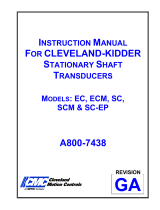 Cleveland Motion Controls A800-7438 User manual
Cleveland Motion Controls A800-7438 User manual
-
 Cleveland Motion Controls AO-70165 User manual
Cleveland Motion Controls AO-70165 User manual
-
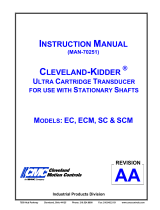 Cleveland Motion Controls MAN-70251 User manual
Cleveland Motion Controls MAN-70251 User manual
-
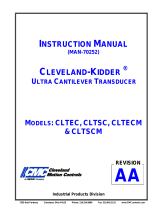 Cleveland Motion Controls MAN-70252 User manual
Cleveland Motion Controls MAN-70252 User manual
-
 Cleveland Motion Controls AO-90357 User manual
Cleveland Motion Controls AO-90357 User manual
-
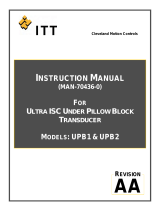 Cleveland Motion Controls MAN-70436-0 User manual
Cleveland Motion Controls MAN-70436-0 User manual
-
 Cleveland Motion Controls MAN-70430-0 User manual
Cleveland Motion Controls MAN-70430-0 User manual
-
 Cleveland Motion Controls AO-70172 User manual
Cleveland Motion Controls AO-70172 User manual
-
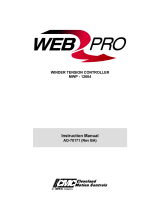 Cleveland Motion Controls AO-70171 User manual
Cleveland Motion Controls AO-70171 User manual
-
 Cleveland Motion Controls MAN-13466 User manual
Cleveland Motion Controls MAN-13466 User manual
Other documents
-
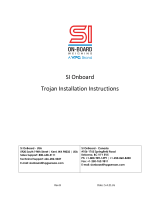 SI Onboard Trojan J Bracket Owner's manual
SI Onboard Trojan J Bracket Owner's manual
-
York Standard Air Handling Units User manual
-
Johnson Controls 100 Series Installation Operation & Maintenance
-
Campbell Scientific ST350 Owner's manual
-
Johnson Controls 060 Installation Operation & Maintenance
-
Honeywell SC500 Series Single-Channel Installation guide
-
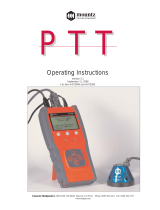 Mountz PTT-2000 Operating Instructions Manual
Mountz PTT-2000 Operating Instructions Manual
-
Honeywell SC2000 User manual
-
ATI Technologies Axia80 User manual
-
Emerson Daniel 3814 Owner's manual





























